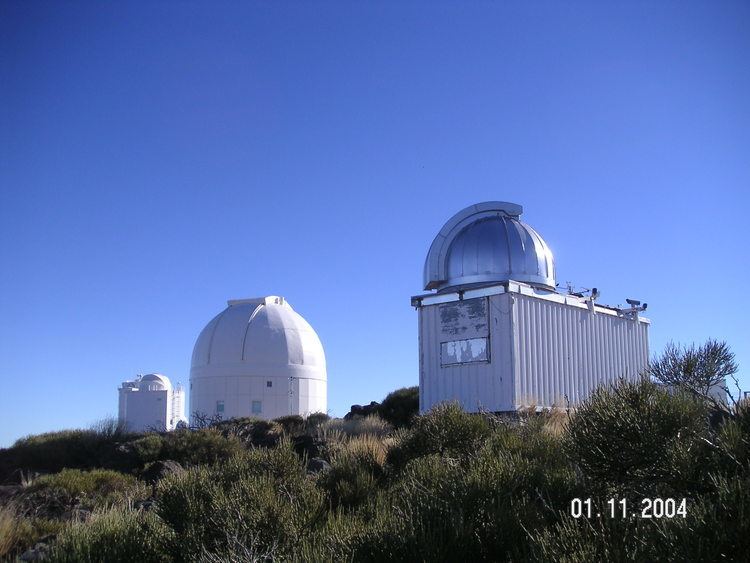Altitude 2,400 m (7,900 ft) Built 2002–2004 (2002–2004) | Wavelength visible light | |
 | ||
Telescope style optical telescope, Schmidt–Cassegrain telescope | ||
The Bradford Robotic Telescope (BRT) is an autonomous astronomical telescope located at Teide Observatory, Tenerife in the Canary Islands. It is owned by the University of Bradford and was built between 2002 and 2004 for remote use by schools and individuals worldwide. As of November 2009, the observatory has returned over 70,000 images and has more than 23,000 users.
Contents
On May 15, 2016, the BRT team announced via email to registered users that control of the Bradford Telescope would be transferred to the Open University, and renamed the Autonomous Robotic Telescope (ART).
Bradford robotic telescope beyond 2000
Mount
All the hardware is mounted on top of a 2-meter high pier, which rests on the top of the bed rock of the mountain. The pier is made of steel and is filled with sand to prevent further damping. The Paramount ME mount is an equatorial mount, which means that RA axis points to the celestial pole, thus enabling the systems to track objects without field rotation.
Instrumentation
The Bradford Robotic Telescope consists of three optical systems providing varying fields of view.
Control systems
In March 2003, a new dome arrived at the site. It uses the Meridian Controls system to control the full dome remotely. No human intervention is required.
Weather systems
The BRT Weather Station runs 24x7, but is unreliable. It is because the observatory is located very high up. It often occurs that there is haze or cloud cover, right till the bottom of the observatory. So, the observatory weather system relies on the meteorological forecasts from the weather station at Observatorio del Teide. It gives details such as wind speed and direction, solar radiation, internal and external humidity, etc. The main function of the weather station is to provide a signal to the safety control systems. It generates an 'alert' that describes what the weather conditions are. The safety systems have a set of 'rules' that determine bad weather. If any of these 'rules' are met, then the safety systems generates an alert that instruct the control systems to act accordingly.
